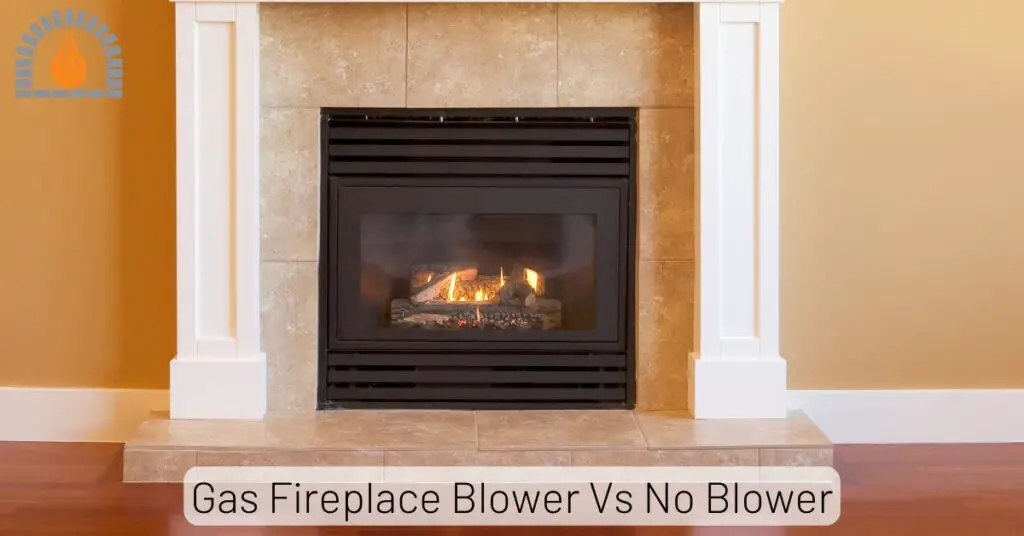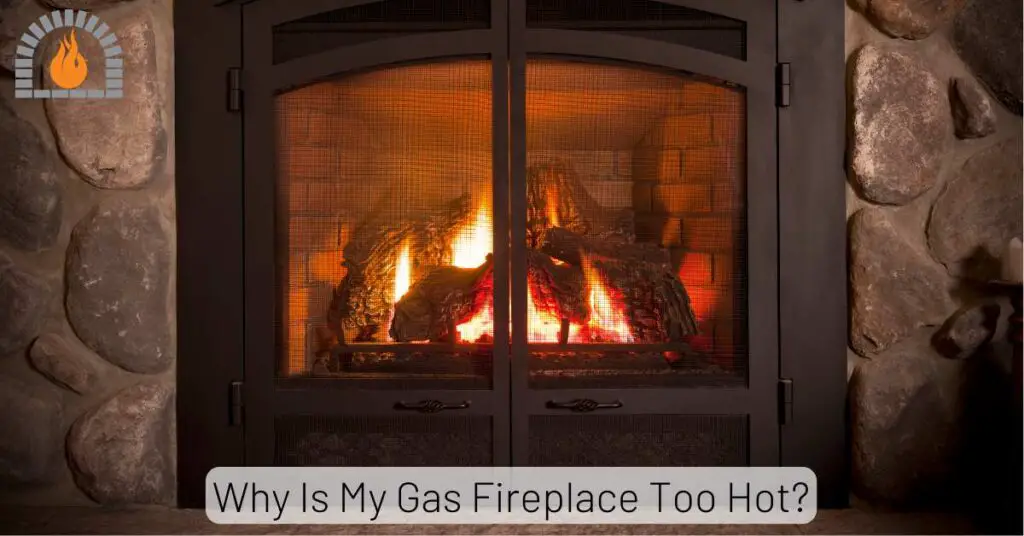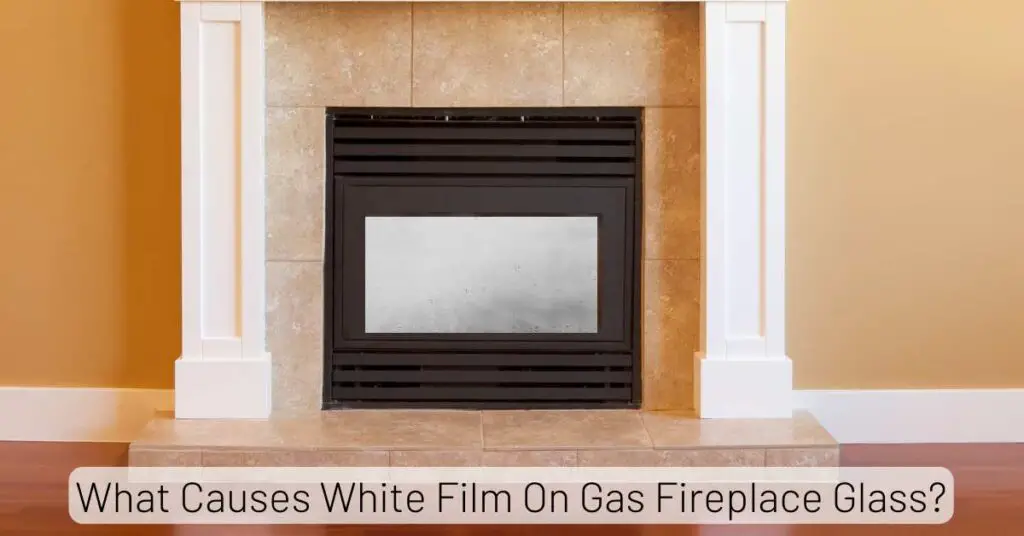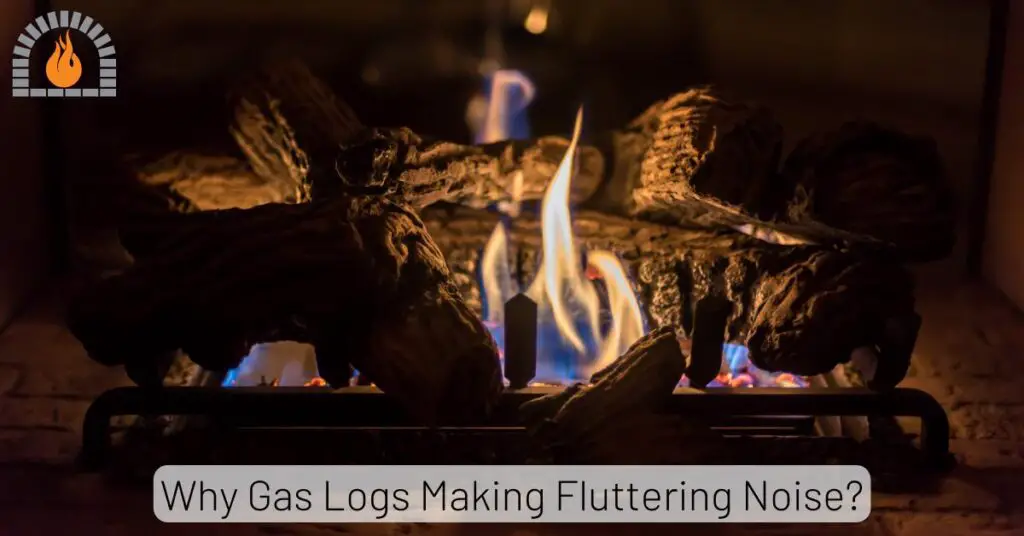A gas fireplace is the heart of a cozy home, offering the perfect blend of warmth, ambiance, and convenience. However, achieving that ideal flame requires more than just flicking a switch; it starts with choosing the right gas fireplace burner pan.
The perfect burner pan for your gas fireplace not only ensures efficient and even heat distribution but also enhances the aesthetic appeal of your fire feature.
In this guide, we’ll explore what makes a burner pan ideal, the various options available, and how to select one that suits your needs, ensuring your fireplace becomes the ultimate centerpiece of comfort and style in your home.
Americangaslos 18″-24″ Burner Pan for Gas Fireplace
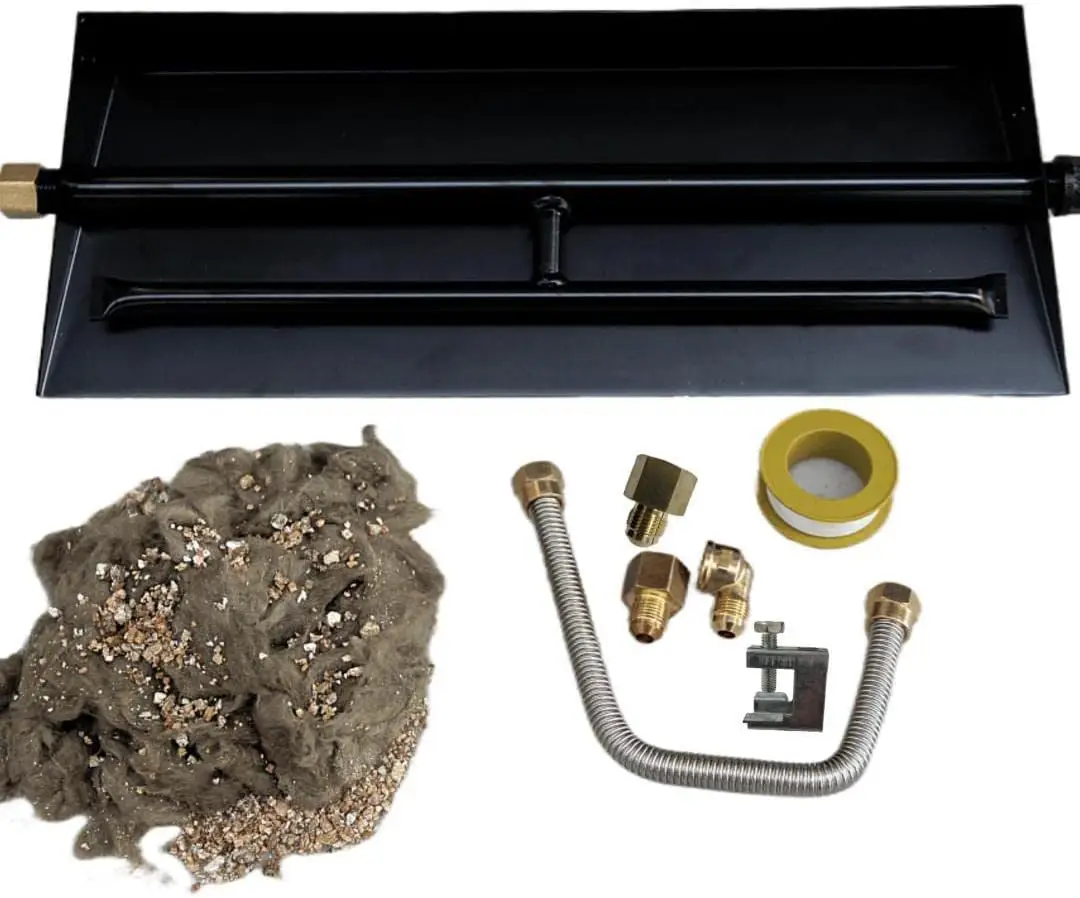
- Durable black powder-coated steel
- Suitable for natural gas or propane gas fireplaces
- 18″ L x 6″ W x 2.5″ H
- Ideal for gas fireplace logs, propane burners, gas fire pits, gas log sets, and gas fireplace inserts
What is a Burner Pan for a Gas Fireplace?
A burner pan for gas fireplace is an essential part of a gas fireplace system. It holds the gas logs or media and distributes the gas evenly to create a realistic and efficient flame.
Think of it as the foundation of your fireplace’s flame, ensuring that the fire burns evenly and beautifully.
Importance of a Burner Pan in Gas Fireplaces
The burner pan is more than just a holder for your gas logs. It plays a vital role in the performance and safety of your fireplace. A well-designed burner pan ensures that the gas is distributed evenly, resulting in a consistent flame pattern that mimics a natural wood fire.
It also helps in preventing gas leaks and ensuring that your fireplace operates efficiently.
Types of Gas Fireplace Burner Pans
Standard Burner Pans
Standard burner pans are the most common type, designed to fit most gas fireplaces. They come in various sizes and shapes to accommodate different fireplace designs and preferences.
Custom Burner Pans
For those with unique fireplace setups or specific aesthetic desires, custom burner pans are available. These are tailored to fit your fireplace perfectly, ensuring optimal performance and visual appeal.
Pan Shapes and Designs
Burner pan for gas fireplace come in various shapes, including rectangular, square, and circular. The design you choose can affect the appearance and flame pattern of your fireplace, allowing for a personalized touch.
Materials Used in Burner Pans
Stainless Steel
Stainless steel burner pans are highly durable and resistant to rust and corrosion. They are a popular choice due to their longevity and sleek appearance.
Cast Iron
Cast iron burner pans are known for their excellent heat retention properties. They provide a steady and robust flame but are heavier and more prone to rust if not properly maintained.
Aluminum
Aluminum burner pans are lightweight and resistant to corrosion. However, they may not be as durable as stainless steel or cast iron options.
Benefits of Using a Burner Pan
- A good burner pan ensures that the gas is evenly distributed, creating a consistent and attractive flame pattern.
- By controlling the gas flow, burner pans help prevent gas leaks and reduce the risk of fire hazards.
- An efficient burner pan can enhance the overall performance of your fireplace, providing better heat output and reducing fuel consumption.
Related Post: Best Gas Fireplace Mantels
How to Choose the Right Burner Pan.
- Before purchasing a burner pan, measure the dimensions of your fireplace to ensure a proper fit.
- Different burner pans are designed for various types of fuel, such as natural gas or propane. Make sure to choose one that is compatible with your fuel type.
- Select a burner pan that complements the style and design of your fireplace for a cohesive and aesthetically pleasing look.
How to Install Gas Fireplace Burner Pan.
Installing a gas fireplace burner pan is a straightforward process that can enhance the efficiency and appearance of your fireplace. Follow these steps to ensure a safe and proper installation:
Materials Needed:
- Gas fireplace burner pan
- 7 ounces of glowing ember
- Copper connection kit
- Sealing tape
- Air mixer valve (for propane installations)
- Wrench
- Gas line connector
- Screwdriver
- Pipe dope or thread sealant
Step-by-Step Guide:
- Turn Off Gas Supply:
- Ensure the gas supply to the fireplace is turned off completely to prevent any accidents.
- Prepare the Burner Pan:
- Unpack your burner pan and check that all components are included: burner pan, glowing ember, copper connection kit, and sealing tape.
- Attach the Air Mixer Valve (Propane Only):
- If using propane, attach the air mixer valve to the burner pan. Follow the manufacturer’s instructions to ensure a secure fit.
- Apply Sealing Tape:
- Wrap sealing tape around the threads of the burner pan’s connection hubs to ensure a tight, leak-proof fit.
- Connect the Gas Line:
- Use the copper connection kit to attach the gas line to the burner pan. Apply pipe dope or thread sealant to the threads for additional security.
- Tighten the connection with a wrench, ensuring it is snug but not over-tightened.
- Position the Burner Pan:
- Place the burner pan in the desired location within the fireplace. Ensure it is centered and stable.
- Secure the Burner Pan:
- If your fireplace design requires it, use screws or mounting brackets to secure the burner pan in place.
- Test the Connections:
- Turn the gas supply back on and use a soapy water solution to check all connections for leaks. Bubbles will indicate a leak, which must be fixed before proceeding.
- Add Glowing Ember:
- Spread the glowing ember material evenly over the burner pan to enhance the visual effect of the flames.
- Final Adjustments:
- Light the fireplace and observe the flame pattern. Adjust the position of the burner pan and ember material as needed to achieve the desired look.
Safety Tips:
- Always follow the manufacturer’s instructions specific to your burner pan model.
- If unsure about any step, consult a professional to avoid potential hazards.
- Regularly inspect your gas connections and burner pan for wear and tear to maintain safe operation.
Related Post: Why Gas Fireplace Light Switch Not Working?
Maintenance Tips for Burner Pans
- Regularly clean your burner pan to remove soot and debris, which can affect performance and safety.
- Inspect the burner pan periodically for signs of damage or wear, such as cracks or rust, and address any issues promptly.
- Perform a thorough maintenance check at the start of each heating season to ensure optimal performance.
Common Issues and Troubleshooting
Uneven Flame Distribution
If you notice uneven flames in your burner for gas fireplace, it may be due to clogged burner holes or an improperly positioned pan. Clean the burner and adjust the pan as needed.
Burner Pan Corrosion
Corrosion can occur over time, especially with cast iron pans. Regular cleaning and proper maintenance can help prevent this issue.
Ignition Problems
If your fireplace is having trouble igniting, check the gas line and connections for any blockages or leaks.
Cost Considerations
Burner pans can range from $50 to several hundred dollars, depending on the material and design.
Professional installation can add to the cost but ensures a safe and proper setup.
Regular maintenance may involve costs for cleaning supplies or professional services, but it is crucial for longevity and performance.
DIY vs Professional Installation
Pros and Cons of DIY Installation
DIY installation of the gas fireplace burner pan can save money, but it requires a good understanding of gas systems and fireplace components. Mistakes can be costly and dangerous.
Benefits of Professional Installation
Professional installation ensures that the burner pan is installed correctly and safely, providing peace of mind and optimal performance.
Environmental Impact
Choosing burner pans made from eco-friendly materials can reduce your environmental footprint.
A well-designed burner pan can improve the energy efficiency of your fireplace, reducing fuel consumption and emissions.
Innovative Features in Modern Burner Pans
- Smart Controls
- Some modern burner pans come with smart controls, allowing you to adjust the flame and heat output remotely.
- Enhanced Aesthetics
- Innovative designs and materials can enhance the visual appeal of your fireplace.
- Customizable Options
- Many manufacturers offer customizable burner pans, allowing you to choose the size, shape, and design that best suits your needs.
Popular Brands and Models
Top Manufacturers
Some of the top manufacturers of burner pans include Peterson Real Fyre, Napoleon, and Empire Comfort Systems.
Highly-Rated Models
Look for models with high ratings and positive customer reviews to ensure quality and reliability.
Customer Reviews
Reading customer reviews can provide valuable insights into the performance and durability of different burner pans.
FAQs
What is the best material for a burner pan?
Stainless steel is often considered the best material for a burner pan due to its durability and resistance to corrosion.
Can I install a burner pan myself?
Yes, but it requires a good understanding of gas systems and fireplace components. If in doubt, professional installation is recommended.
How often should I clean my burner pan?
It’s recommended to clean your burner pan at least once a year or more frequently if you use your fireplace regularly.
What are the signs that I need a new burner pan?
Signs that you need a new burner pan include visible damage, corrosion, and uneven flame distribution.
Are burner pans eco-friendly?
Burner pans made from eco-friendly materials and designed for energy efficiency can help reduce your environmental impact.
Final Thoughts
In conclusion, the burner pan for gas fireplace is a vital component of any gas fireplace, playing a crucial role in its performance, safety, and aesthetics. By understanding the different types, materials, and installation processes, you can choose the right burner pan to enhance your fireplace experience.
Whether you opt for a DIY installation or professional help, regular maintenance is key to ensuring your burner pan operates efficiently and safely for years to come.
Affiliate Disclosure: Fireplaceadviser.com is a participant in the Amazon Services LLC Associates Program. We may earn a commission when you click on certain links on this site and purchase.

Hello!! I am Jamal Khan. I often fix my home electric heaters and gas stove problems and research the common issues in the heating units to improve my knowledge and expertise. The aim of establishing fireplaceadviser.com is to share my expertise and knowledge with my audience.

